
Roots
There is a whisper carried on the wind, a silent language spoken through generations, that speaks of hair. For Black women, the question of why head coverings find such a steadfast place in daily life, or for special occasions, extends far beyond simple fashion or passing trend. It is a dialogue with ancestry, a tangible connection to practices that span continents and centuries.
Each fold of fabric, each carefully placed knot, carries echoes of resilience, beauty, and survival, rooted deeply in the unique landscape of textured hair heritage. This journey through the spirit of a strand begins with understanding the foundational elements of hair itself, viewed through an ancestral lens.

What is Textured Hair’s Ancestral Blueprint?
The very architecture of Black and mixed-race hair, with its diverse spectrum of curls, coils, and kinks, holds a biological story centuries old. Unlike straighter hair textures, which possess a more circular cross-section, Afro-textured hair often exhibits an elliptical or even flat cross-section, leading to its characteristic helical shape. This inherent coiling, while beautiful, also means the hair shaft has more points of curvature where it can be susceptible to breakage. Moreover, the natural oils produced by the scalp, sebum, travel down a coiled strand with greater difficulty, often leaving the ends feeling drier.
Ancient African societies, with their acute observation of the natural world, understood these innate qualities of their hair. Their practices were not simply cosmetic; they were deeply practical, designed to nurture and protect these unique strands against environmental factors such as the intense sun, dust, and drying winds. This understanding formed the bedrock of early hair care, long before modern science offered its explanations. Early hair care traditions often involved the use of natural butters, herbs, and powders to assist with moisture retention.

How Did Early Societies Classify Hair?
While contemporary trichology offers numerical classification systems, ancestral communities had their own intricate methods of understanding hair. These systems were less about curl pattern percentages and more about identity, social standing, and communal belonging. Hair became a visual lexicon, a living map of one’s place in the world.
A particular braid, a specific adorned coiffure, or indeed, the presence or absence of a head covering, could signify a woman’s marital status, her age, her tribe, or even her readiness for certain life rites. In West African societies in the 1400s, for example, a person’s hairstyle could convey their social status, marital status, wealth, or ethnic group.
The heritage of head coverings for Black women is a deeply woven narrative of cultural preservation and enduring self-expression.
This traditional classification system, passed down orally and through practice, ensured that knowledge about hair care was communal and deeply embedded in daily life. Head coverings, in this context, were not merely accessories; they were integral to this visual language, sometimes signifying reverence, modesty, or even spiritual connection. The way a woman wore her headwrap could convey nuanced information about her identity to those who understood the local customs.

Hair’s Growth Cycle and Environmental Wisdom
The hair growth cycle—anagen, catagen, and telogen phases—is a biological constant. However, its efficiency and the resulting hair health are profoundly influenced by environmental factors, diet, and care practices. Historically, access to nutrient-rich diets and living conditions would have impacted hair health. Ancestral wisdom often compensated for potential deficiencies through topical application of nourishing ingredients and protective styling.
The practice of wrapping hair, even in ancient times, served as a form of environmental protection, safeguarding delicate strands from the harshness of the sun and environmental debris. The very act of covering the hair at night, a practice long predating modern scientific understanding, served to protect the hair from friction and moisture loss, preserving its integrity and length. This foresight in historical care practices speaks to an intuitive understanding of hair biology, passed down through the ages.
| Ancestral Observation Coiled nature of hair leads to dryness. |
| Modern Scientific Link The helical structure of textured hair impedes sebum distribution along the hair shaft, leading to inherent dryness. |
| Ancestral Observation Hair needs protection from elements. |
| Modern Scientific Link Head coverings and protective styles shield hair from UV radiation, dust, and mechanical damage, preserving structural integrity. |
| Ancestral Observation Nighttime preservation prolongs styles. |
| Modern Scientific Link Silk and satin bonnets reduce friction and moisture loss against absorbent fabrics, preventing breakage and maintaining style. |
| Ancestral Observation Ancient wisdom often aligns with contemporary scientific understanding, revealing a continuous heritage of thoughtful hair care. |

Ritual
The gesture of selecting a fabric, the rhythmic motion of wrapping, the securing of a knot—these are not simply actions. They are elements of a deep ritual, a practice passed through the hands of mothers and grandmothers, carrying the weight of cultural memory and the quiet strength of tradition. Head coverings stand as central figures in the grand theater of textured hair styling, holding a place of honor across both ancestral techniques and contemporary expressions. They are not merely an afterthought; they are often the crowning act, the final blessing upon a carefully tended crown, and a symbol of heritage.
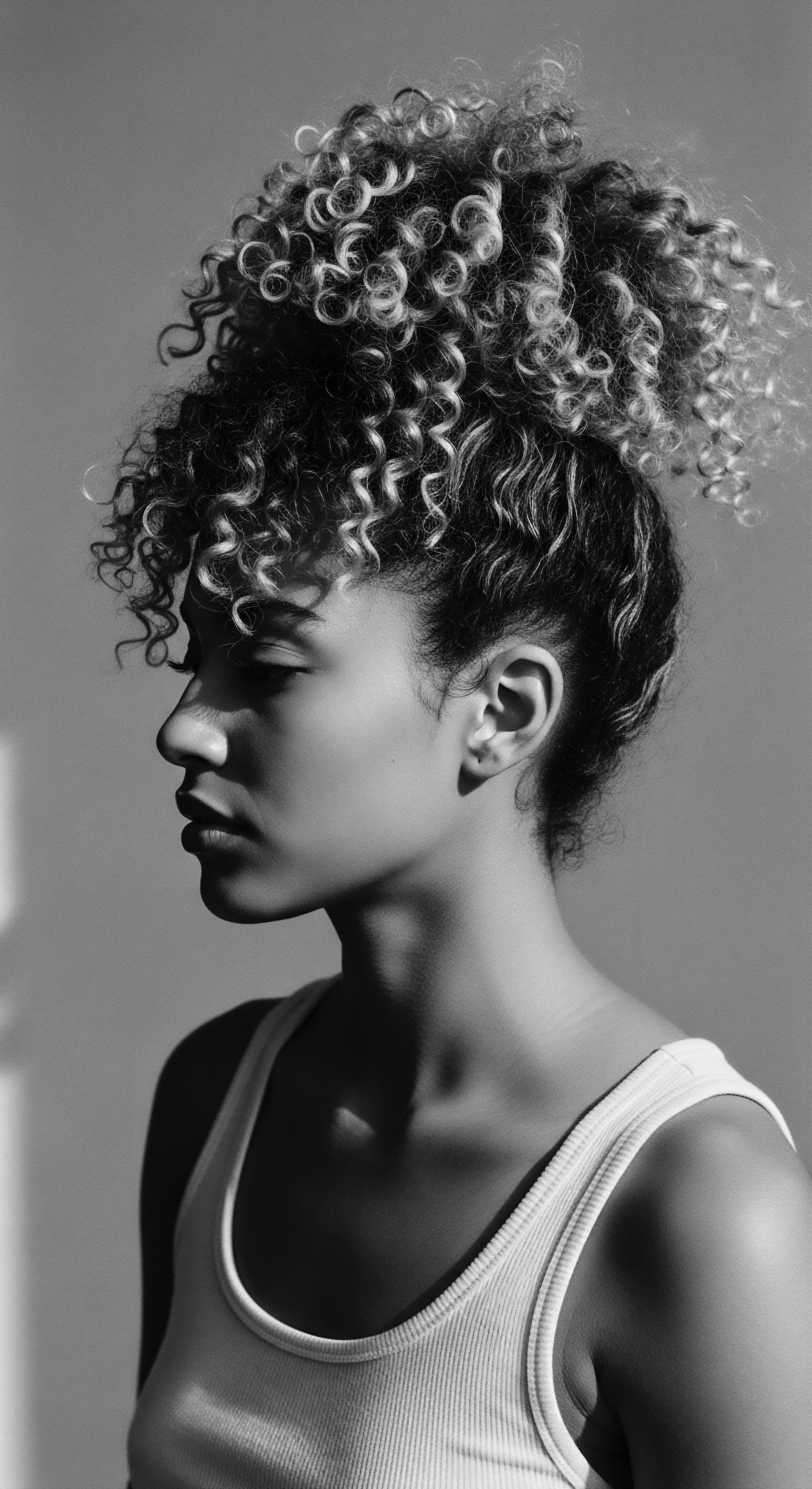
How do Head Coverings Protect Hair?
Protective styling in its myriad forms—from intricate Cornrows to resilient Locs and structured Twists—has always been a cornerstone of Black hair care. These styles minimize manipulation, tucking away delicate ends and reducing exposure to environmental stressors. Head coverings, whether a daytime wrap or a nighttime bonnet, extend this protective philosophy.
They act as a physical shield, guarding against friction that can lead to breakage, particularly when sleeping on abrasive surfaces like cotton. In some traditional African contexts, head coverings were also used to protect hair from sweat and dirt during daily activities and labor.
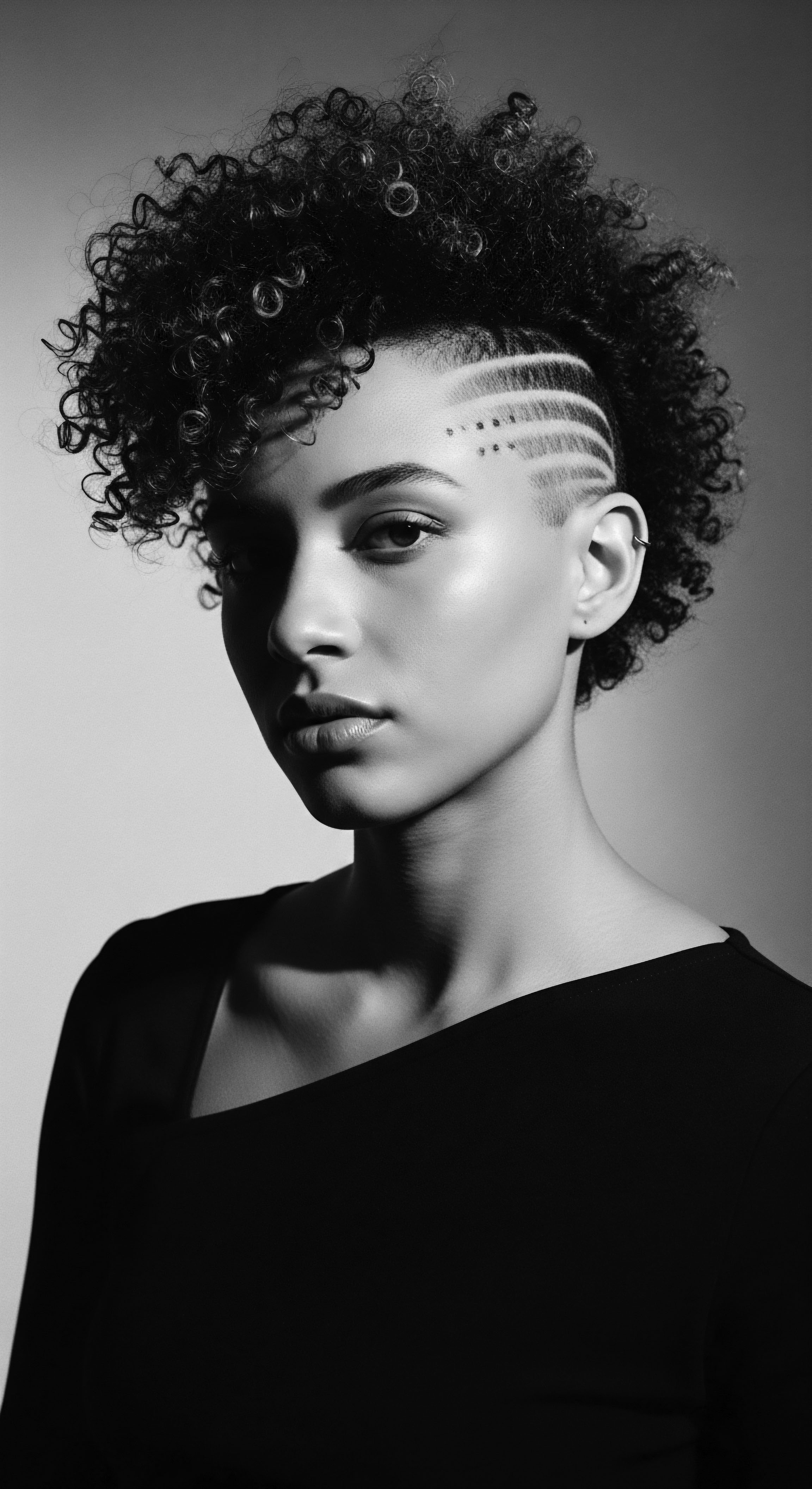
The Artistry of Styling, The Wisdom of Wraps
The transformation of hair through natural styling and definition techniques has long been an art form. From coil-outs to braid-outs, these methods rely on nurturing the hair’s natural pattern. A head covering, when applied thoughtfully, can assist in setting these styles, maintaining definition, and preserving the work invested.
The practice of wrapping the hair with a scarf or bonnet after styling helps to keep curls defined and prevents them from getting crushed or dried out overnight. This practice, often a part of a wider regimen, ensures that a style created with care can last for days, reducing the need for frequent manipulation and heat application.
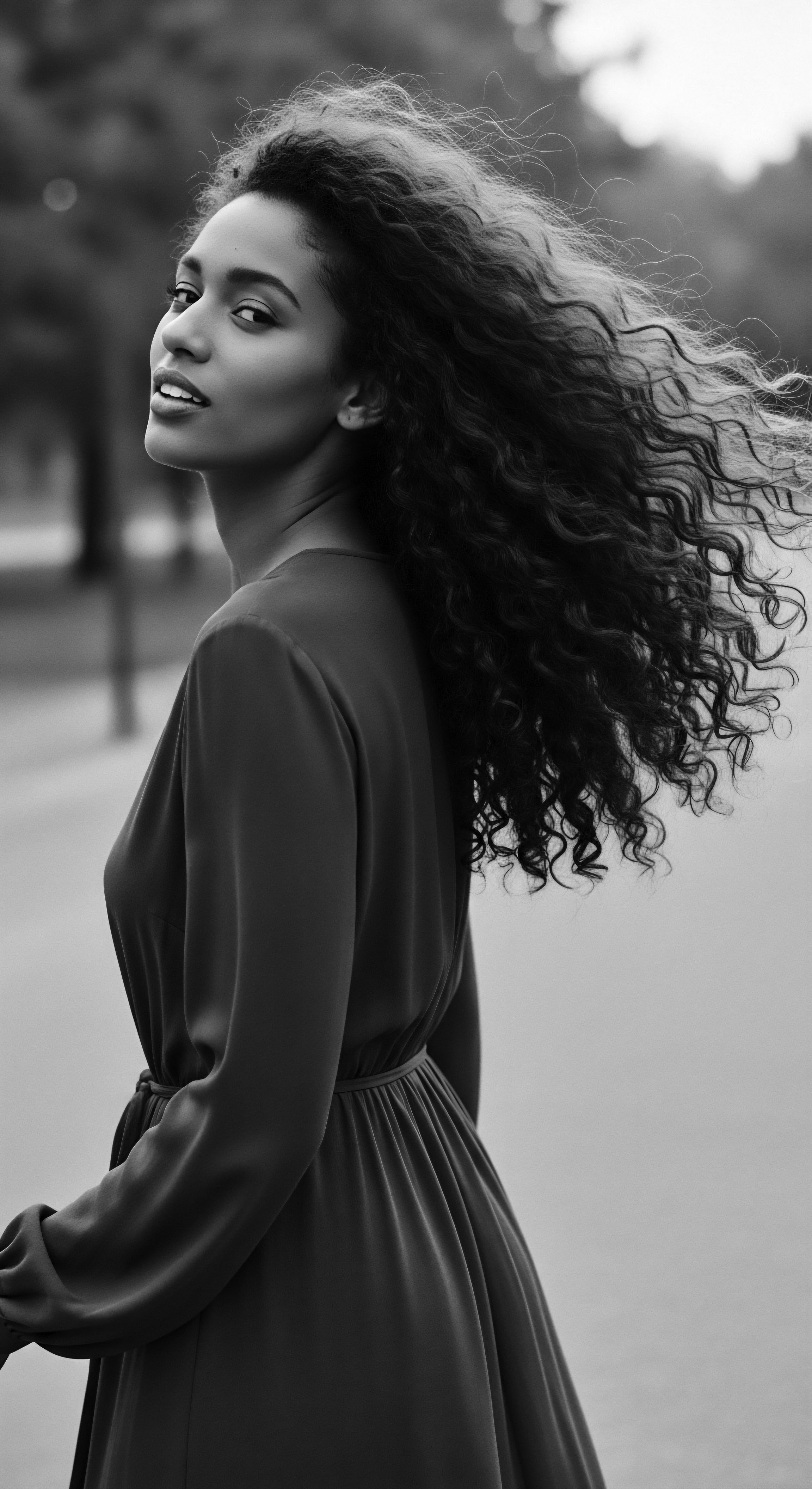
What Role Did Head Coverings Play in Resistance?
The journey of head coverings is not without its trials, particularly during the transatlantic slave trade and subsequent periods of oppression. In many parts of the Americas, enslaved Black women were forced to wear head coverings, often simple rags, as a symbol of their subjugation. This was an attempt to strip them of their cultural identity and to diminish their beauty. Yet, in an astounding act of defiance and creative brilliance, these head coverings became symbols of resistance.
For instance, the Tignon Laws enacted in colonial Louisiana in 1786 mandated that free women of color cover their hair with a tignon to signify their “slave class” status and to curb their perceived social mobility and attractiveness to white men. This law, however, was subverted with powerful artistry. Black women adorned their tignons with luxurious fabrics, vibrant colors, jewels, and elaborate tying styles, transforming a symbol of oppression into a statement of wealth, beauty, and undeniable cultural pride. This historical example profoundly illuminates how head coverings became a canvas for identity and resistance, deeply connecting to the heritage of Black women’s experiences and ancestral practices of reclaiming agency.
Head coverings have been transformed from symbols of oppression into powerful statements of cultural pride and individual artistry.
The ingenuity of these women highlights a deep-seated connection to their heritage, using fashion as a silent language of dissent. Some even used folds in their headscarves to communicate coded messages to each other. Even after the Tignon Laws were no longer enforced, headwraps continued to be worn, solidifying their place as enduring symbols of Black women’s resilience and African heritage.
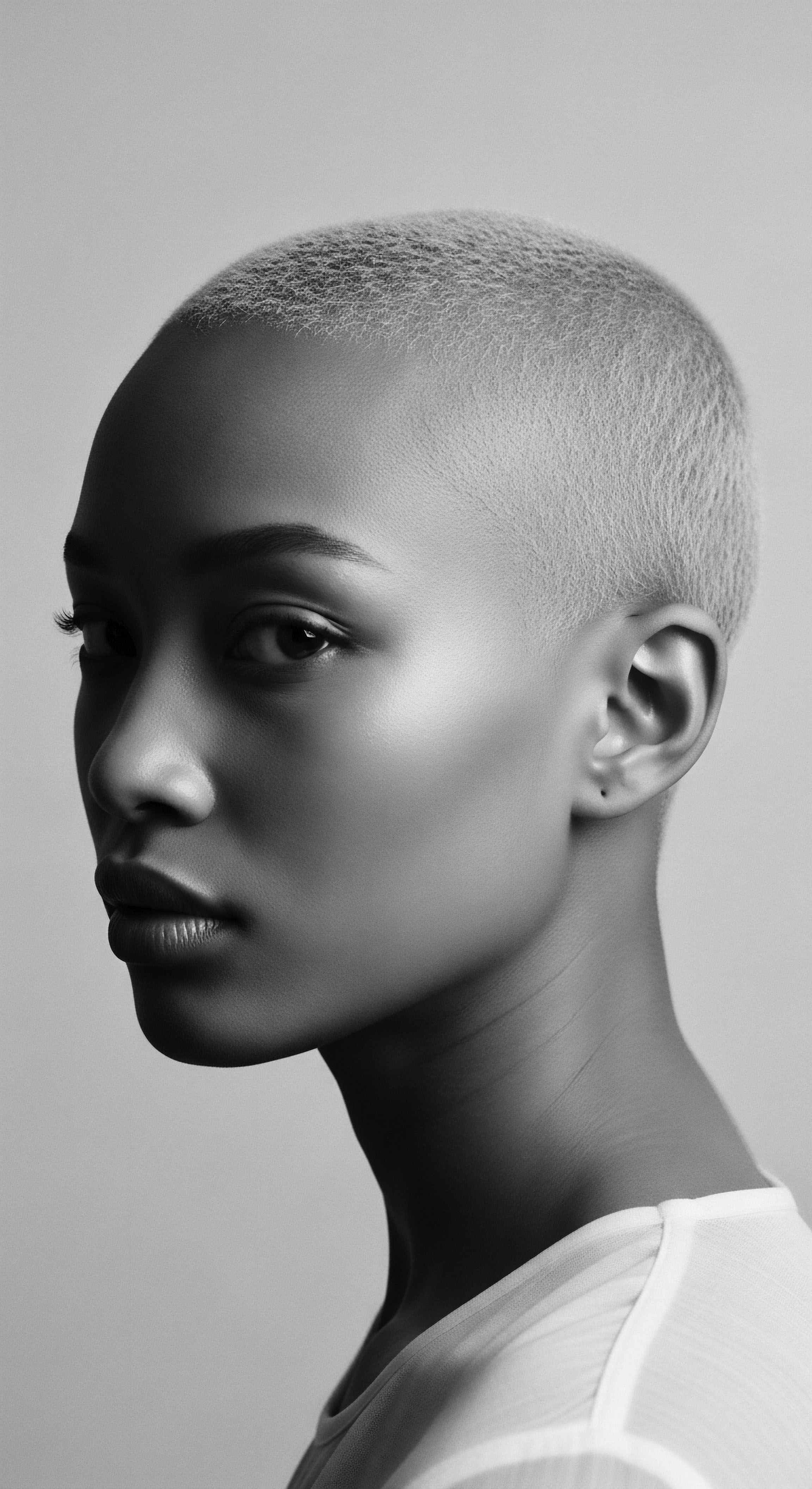
Relay
The legacy of textured hair care, passed down through generations, finds its most tender expression in the daily and nightly rituals that ensure its vitality and resilience. Head coverings, in their modern forms, are integral to this continued journey, bridging ancestral wisdom with scientific understanding to provide holistic care and address contemporary hair challenges. This continuation of tradition, refined and reaffirmed, speaks volumes about the enduring spirit of textured hair heritage.

How Do Nighttime Rituals Safeguard Hair Health?
The nighttime sanctuary, the quiet moments before sleep, offers a unique opportunity for hair care. The ritual of wrapping hair at night, often with a silk scarf or bonnet, is a cornerstone of preserving hair health for Black women. This practice traces its roots to ancestral knowledge that recognized the need to protect delicate strands from the rigors of sleep. Early head ties protected hair from getting messy or unkempt, a concept with roots in West African traditions that considered untidy hair disgraceful.
Today, science validates this wisdom. Silk and satin fabrics are smooth, creating significantly less friction on the hair compared to cotton pillowcases. Research indicates that silk’s friction coefficient is between 0.07-0.15, while cotton registers 0.35-0.43, meaning hair glides across silk with substantially less friction. This reduction in friction helps to prevent mechanical damage such as breakage, frizz, and tangles.
Furthermore, silk and satin are less absorbent than cotton, allowing the hair to retain its natural oils and moisture, which is crucial for textured hair that is prone to dryness. This practical application of coverings at night extends the life of hairstyles, making hair more manageable upon waking and reducing the need for daily manipulation.
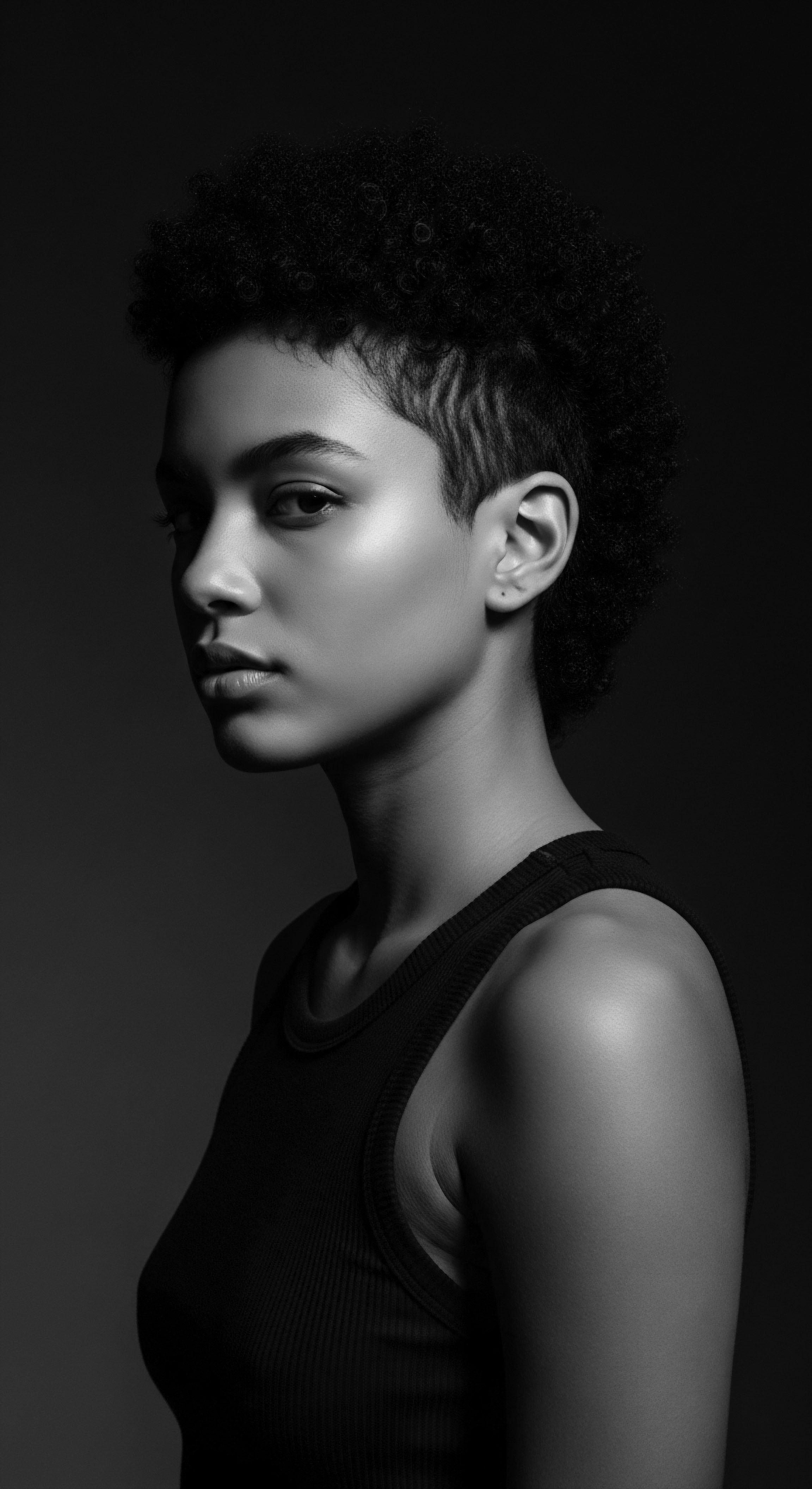
What Traditional Ingredients Bolster Textured Hair?
Ancestral hair care was deeply intertwined with the bounty of the earth, utilizing natural ingredients for their nourishing and protective properties. These traditional elements, now often supported by modern scientific understanding, continue to inform personalized textured hair regimens. The application of oils and butters was a consistent practice across various African communities to moisturize and strengthen hair. Today, we recognize the specific benefits these natural elements offer:
- Shea Butter ❉ Rich in vitamins A, E, and F, it seals in moisture, reduces breakage, and offers some UV protection, mirroring its historical use for hair and skin conditioning in West African traditions.
- Coconut Oil ❉ Known for its ability to penetrate the hair shaft, it helps reduce protein loss and retains moisture, a practice passed down through generations for its conditioning properties.
- Castor Oil ❉ Widely used for scalp health and hair growth stimulation, a long-standing remedy in traditional Black hair care, particularly for strengthening edges.
- Herbal Infusions ❉ Various herbs, often locally sourced, were used in rinses or pastes to cleanse, strengthen, and condition hair, reflecting a holistic approach to scalp and strand well-being.
This deep connection to natural ingredients not only provides physical benefits to the hair but also serves as a symbolic link to ancestral practices and a more holistic approach to wellness. The understanding that “greasing our hair is a tradition, passed down from our African ancestors, using natural products” continues to be shared within Black families today.
The daily act of head covering, particularly at night, offers a silent ritual of hair preservation rooted in both age-old wisdom and modern scientific insight.

How Does Holistic Care Extend to Hair?
The ancestral approach to hair care often transcended mere physical grooming; it was a deeply spiritual and communal act. Hair was, and for many still is, seen as an extension of the self, a conduit for spiritual energy and connection to one’s lineage. This holistic perspective underscores the idea that hair health is not separate from overall well-being. Problem-solving for textured hair, historically, involved understanding the subtle cues the hair offered and responding with nature’s remedies and protective measures.
Head coverings, in this broader context, provided not only physical protection but also a psychological shield, allowing women to maintain dignity and self-esteem amidst challenging circumstances. The conscious decision to protect one’s hair, whether from environmental factors or societal pressures, becomes an act of self-care deeply rooted in historical resilience. This intergenerational continuity of care, from grandmother’s hands to daughter’s crown, perpetuates a living heritage of textured hair wellness.
| Era / Context Pre-Colonial Africa |
| Primary Function / Meaning Identity, social status, spirituality, sun protection. |
| Connection to Textured Hair Heritage Indicated tribal belonging, marital status, wealth; protected unique hair structures from environmental elements. |
| Era / Context Slavery in the Americas |
| Primary Function / Meaning Symbol of subjugation, forced concealment. |
| Connection to Textured Hair Heritage Initially used to dehumanize and shame, but creatively transformed into symbols of resistance and hidden communication. |
| Era / Context Post-Emancipation to Mid-20th Century |
| Primary Function / Meaning Practicality (cleanliness, moisture, style preservation), continued social signaling. |
| Connection to Textured Hair Heritage Adapted for daily life, maintaining styles, and often associated with domestic work, though still holding cultural memory. |
| Era / Context Civil Rights Era to Present |
| Primary Function / Meaning Symbol of Black pride, self-expression, protective styling, cultural reclamation. |
| Connection to Textured Hair Heritage Re-appropriated as a celebration of Afrocentric beauty, protecting natural hair, and honoring ancestral legacy. |
| Era / Context The journey of head coverings reflects a dynamic interplay between oppression and defiance, consistently reaffirming their significance in Black women's heritage. |

Reflection
The threads of hair, much like the stories of a people, are never truly severed. They stretch across oceans, through triumphs and adversities, binding past to present in a continuum of living heritage. Why Black women wear head coverings is not a question with a singular, static answer. It is a symphony of echoes from ancient lands, a testament to enduring resilience against systemic forces, and a vibrant, evolving expression of self.
Each knot tied, each fabric draped, carries the weight of a shared history, the wisdom of ancestors who understood the crown as both a biological marvel and a spiritual antenna. The soul of a strand, indeed, lies in its capacity to hold these myriad meanings, to adapt, to resist, and ultimately, to declare its own inherent beauty. In the quiet protection of a bonnet, or the bold statement of a wrap, a profound dialogue with heritage continues, ensuring that the legacy of textured hair remains unburdened, unbound, and truly celebrated.

References
- Gould, Virginia M. 1986. “The Free Women of Color of New Orleans ❉ A Reappraisal”. In New Orleans in the Gilded Age ❉ Politics and Life in the Crescent City, edited by Robert R. McDonald and Peter H. Clark, 149-165.
- Byrdie. 2022. “The Significance and History of Bonnets”.
- Sonson. 2021. “The History of Headwraps and Black Culture”.
- Green Views Residential Project. 2022. “History of the African Head Wrap”.
- The Natural Hair Advocate. 2016. “Wrap it Up ❉ A Tribute to the Head Tie”.
- JD Institute of Fashion Technology. 2021. “HEADWRAPS ❉ HISTORY AND EVOLUTION”.
- Ari Party Hair. 2025. “The History and Symbolism of Hair Wrapping Across the African Diaspora”.
- Leone Culture. 2023. “Exploring the Significance Of Headwraps In African Fashion And Traditions”.
- New York Historical. “Fashionable Rebellion – Women & the American Story”.
- Hype Hair. 2023. “Unveiling the History of the Hair Bonnet for Black Women”.
- The Zoe Report. 2024. “How Bonnets Went From Niche Black Beauty Ritual To Mainstream Accessory”.
- Wholesale Silk Supplier Suzhou Taihu Snow Silk. 2025. “Sleeping in A Silk Hair Bonnet ❉ Silk Bonnet Benefits for Your Hair Care”.
- NOCHKA. 2024. “The Science Behind Reversible Silk Bonnet Sets”.
- Substack. 2025. “Ancestral Hair Rituals to Nourish Your Hair and Soul”.
- PsychoHairapy. 2024. “Our Hair ROOTS ❉ Incorporating our Black Family Hair Traditions and Routines as a Coping Technique to Increase Positive Mental Health”.
